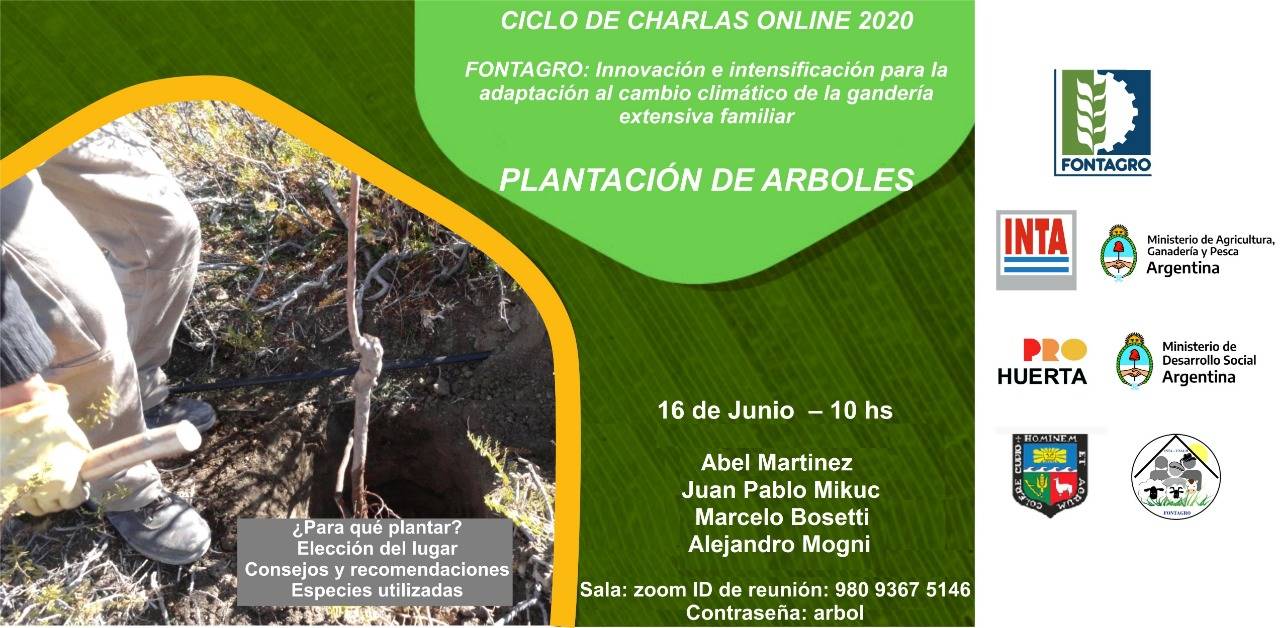On June 16, extensionists Abel Martínez, Juan Pablo Mikuc, Marcelo Bosetti and Alejandro Mogni gave a talk on tree planting.

Within the framework of the COVID-19 pandemic, the FONTAGRO project "Innovation and intensification for adaptation to climate change in extensive family livestock farming" has developed an agenda of radio programs and webinars with the aim of bringing the knowledge produced or in poroduction to producers, technicians and the general public. In this context, on June 16, the webinar: Tree planting was held.
During the webinar, extensionists Abel Martínez, Juan Pablo Mikuc, Marcelo Bosetti and Alejandro Mogni, from INTA's extension agencies in the towns of Zapala and Chos Malal, Province of Neuquén, talked about the importance of promoting the planting of small forests in rural establishments so that the families living there can obtain firewood and wood for construction and have places to shelter from wind and snowstorms.
The talk addressed general concepts to be taken into account when planting trees, emphasizing the choice of species, one of the first steps to have a good development of the plants.
The recommendations for a correct choice of species should be based on analyzing the objectives of the plantation, knowing the environment and planting site and taking into account the characteristics and requirements of the tree species chosen.
Subsequently, the steps to be followed for a correct planting were described, highlighting that the recommended time for these practices is between May and August.
Finally, species were recommended for the center-north of the province of Neuquén, emphasizing that, for example, elm and acacia are good for obtaining construction wood. As for firewood, tamarisk, molle, poplar, willow, elm, elm and acacia are good for firewood. In addition, poplar, tamarisk, cypress and pine were recommended for making forest curtains and shelterwood.
This activity was part of actions carried out in the center-north of Neuquén by technicians from INTA Chos Malal and INTA Zapala with the support of FONTAGRO.
The audience was diverse, with regional public and participants from other regions of Argentina and Ecuador.




